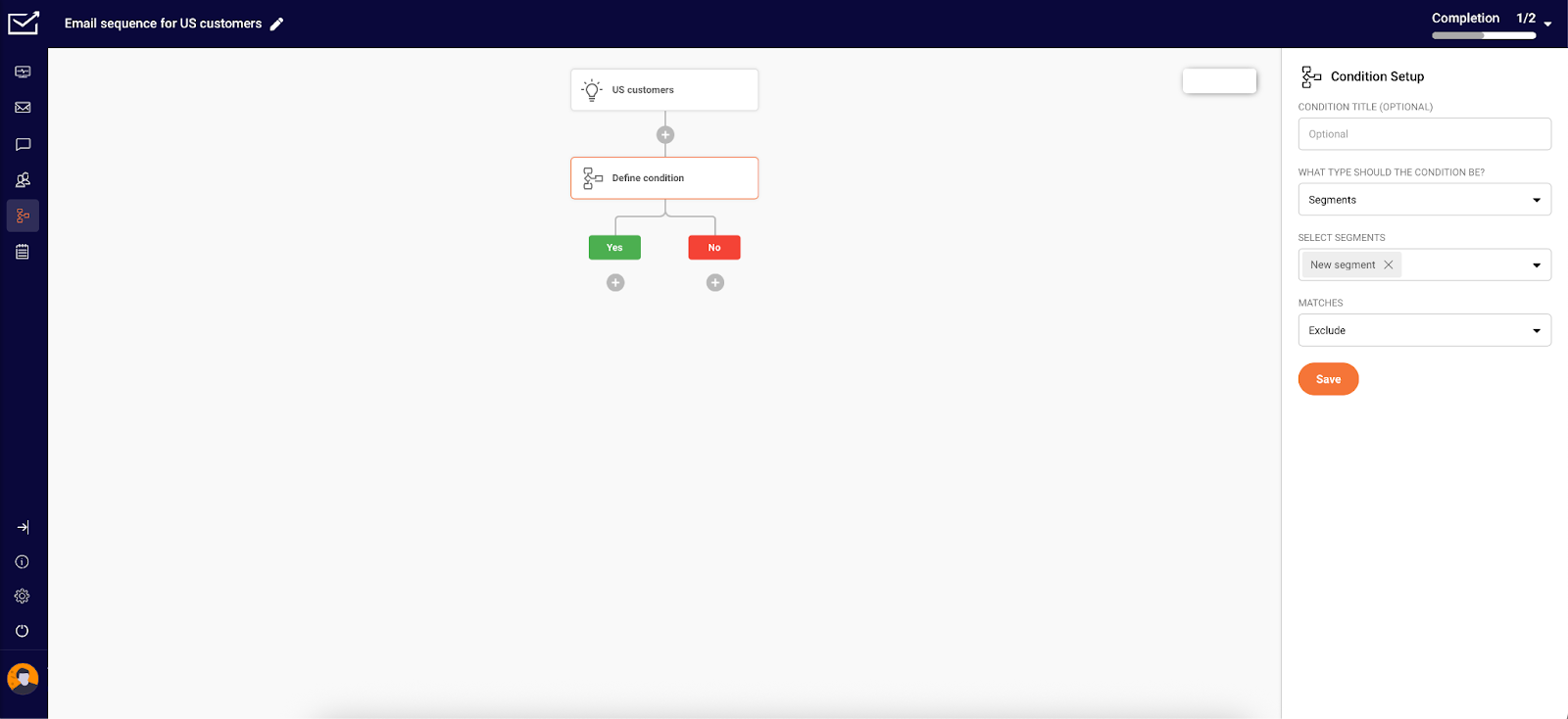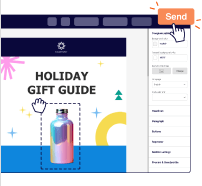Email automation helps marketers save time and engage subscribers at scale—but it’s only effective when it reaches the right people.
Sending a discount to someone who just purchased at full price? That’s a fast track to losing trust. Targeting dormant users with aggressive promos? That could send your email straight to spam.
Luckily, we’ve just made Sender’s automation feature smarter. You can now exclude specific segments or groups from receiving certain emails in your workflows. That means you can:
- Prevent irrelevant messages;
- Fine-tune targeting;
- Increase ROI and reduce unsubscribes.
How does it work? When setting up or editing an automation, use the “Exclude” option under Condition > Segments to specify a segment you want to skip for a specific step or the entire automation, preventing those subscribers from receiving the message or action.

Real-World Examples: How to Use Audience Exclusion
Now, let’s look at real-world scenarios where this makes a big difference:
1. Post-Purchase Discounts:
Instead of a one-size-fits-all approach, customize post-purchase discounts based on Average Order Value (AOV):
High-value customers.
- Offer exclusive, higher-value discounts to reward loyalty and encourage repeat purchases.
- Exclude these customers from lower-tier discount offers to maintain the exclusivity of their reward.
Lower-value customers.
- Offer smaller discounts to incentivize repeat purchases without significantly impacting profit margins.
- Exclude these customers from higher-tier discounts reserved for your top spenders.
This way, you’re building loyalty with everyone, from your biggest spenders to your newest customers, all while keeping your profits high.
2. Post-Purchase Segmentation: Discount-Sensitive vs. Full-Price Buyers
Recognize and cater to different buying behaviors post-purchase:
Discount-sensitive buyers.
Target these customers with exclusive discount codes and promotions.
Full-price buyers (often VIP customers).
- Nurture these customers with product updates, new arrival announcements, and exclusive content, reinforcing their preference for value over discounts.
- Critically, exclude them from discount-focused emails to avoid training them to wait for sales.
This strategy keeps both groups happy: your discount-seeking buyers get their deals, and your full-price shoppers stay loyal to your brand – which means more money in your pocket.
3. Abandoned Cart Recovery
Tailor your abandoned cart recovery strategy based on customer history and cart value.
First-time buyers.
- Offer a more compelling incentive, such as a higher discount or free shipping, to encourage their first purchase.
- Remove them from lower-value offers to maximize conversion rates – include “Total lifetime spend equal = 0”
Returning customers.
- A gentler nudge, like a reminder email or a smaller discount, might be sufficient.
- Remove them from the higher-value offers designed for first-time buyers – exclude “Total lifetime spend equal = 0”.
Bonus: Cart Value-Based Discounts
You can make this even smarter by adjusting the discount based on how much is in the cart. A bigger cart (i.e., more than average order value) gets a bigger discount, encouraging larger purchases. This helps your profit margins while still giving people a reason to complete their purchase. No need to offer big discounts on small orders, and your higher-value customers get a little extra appreciation.
4. Marketing Campaigns: Prioritizing Engaged Subscribers
Focus your email marketing efforts on engaged subscribers to boost performance and protect your sender reputation.
Engaged subscribers.
Target the users who engaged with your emails in the past 180 days (include segment “Engaged subscribers 180 days”) with regular newsletters, product updates, and targeted promotions.
Inactive subscribers.
Exclude these users from your regular campaigns to avoid low open rates and potential spam complaints. Consider implementing a separate re-engagement strategy for this segment.
This focused approach yields better results: more people open and click your emails, a stronger reputation as a sender, and more effective campaigns overall.
5. Marketing Campaigns: Excluding Complainants
A good way to protect your sender reputation is to remove anyone who has marked your emails as spam. This prevents future complaints and helps ensure your emails continue to reach your subscribers’ inboxes.
6. Upselling Campaigns: Personalized Product Recommendations
You can also make your upselling efforts more effective by tailoring product recommendations to each customer’s behavior. This approach can be applied to all automation workflows, but is particularly effective for abandoned cart recovery and post-purchase scenarios.
Targeted customers.
Suggest products based on past purchases and browsing history to increase relevance and conversion rates.
Untargeted customers.
Exclude customers who already own the suggested product or have not shown prior interest. This avoids irrelevant messaging and improves the customer experience.
Try it yourself!

